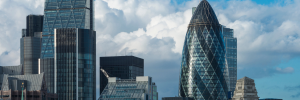As the centenary of the Great Exhibition approached, politicians had begun to ask whether a celebration in the same vein might operate as a tonic to lift the nation’s spirits.
1951 Britain was very different from the context in which the Great Exhibition took place. Britain had lost its sense of purpose and place in the world. The Second World War had sounded the death knell for the days of the Empire, which had been in a phase of steep decline since 1918.
Where the Great Exhibition had been a celebration of the British Empire and its international territories, the Festival of Britain needed to focus specifically on the British Isles. The years immediately following the end of the war had lost the triumphalist, proud tone of the age of empire, and a general sense of gloom and depression prevailed in public discourses. Postwar Britain was a time of austerity, where rationing had continued, when 2 million people were unemployed and there was a shortage of foreign currency to buy food from overseas and the traumatic memory of the conflict as soldiers gradually came home and families began to rebuild their lives.
In 1947 a festival to mark the centennial of the Great Exhibition of 1851 was proposed to the house. In March 1948 the Festival of Britain Office was established, which would be responsible for coordinating festival events around the country.
Even before the Festival of Britain opened, it had been condemned as a waste of money. Sentiments were directed to the budget having better been spent on housing after the destruction of many houses during World War II.
The event organisers wanted to do something unique and progressive with the space, in order to create an iconic architectural statement that would stand for a new era. In line with this agenda, Hugh Casson, an ambitious architect, was put in charge of the construction and design of the Festival site, charged with putting together a team of young architects who would create a modern visual identity for the Festival. This was an important decision because it meant that the festival was, from the outset, imbued with an entirely fresh visual aesthetic that seemed to indicate the inception of a modern, British age.
This new festival with a budget of £12 million was intended to celebrate Britain as a nation and its achievements, “a tonic to the nation” as it were. It was called The Festival of Britain. The Festival was designed to focus British recovery rather than the joys and spoils of empire. The Festival was a reminder of British greatness on its own terms, empire or not.
Learn more about the Festival of Britain by listening to our London History Podcast Episode 54: The Festival of Britain
–
Hazel Baker is an award-winning London Tour Guide and qualified CIGA guide who delivers guided walks and private tours in London. View all of Hazel’s walking tours.



